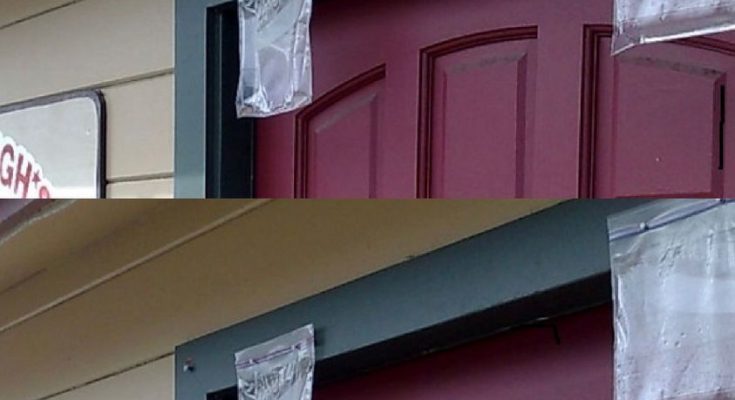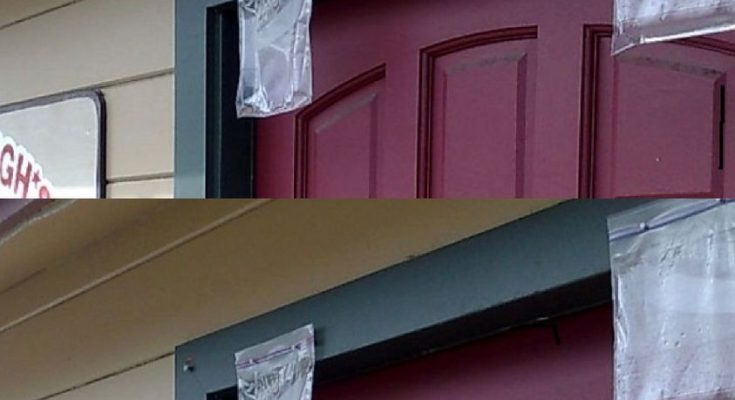The Surprising Effectiveness of Hanging Bags of Water Above Doors to Deter Bugs
When it comes to keeping pesky bugs at bay, homeowners and outdoor enthusiasts have tried countless methods, from chemical sprays to ultrasonic devices. However, one unconventional yet surprisingly effective trick has gained popularity in recent years: hanging bags of water above doors to deter bugs. While it may sound like an old wives’ tale or a dubious DIY hack, there’s actually some scientific reasoning behind this method, making it one of the best tricks for bug control.
The Theory Behind It
The theory behind hanging bags of water to repel bugs is based on the concept of light refraction. According to proponents of this method, the water-filled bags act as natural magnifiers, refracting light in a way that confuses and scares away flying insects like flies, mosquitoes, and wasps. The distorted light patterns created by the water bags are believed to mimic the presence of predators or other threats, prompting bugs to steer clear of the area.
Simple Setup, Surprising Results
One of the most appealing aspects of this bug-repelling method is its simplicity. All you need are clear plastic bags, water, and a way to hang them above doors or entryways where bugs tend to gather. Many DIY enthusiasts recommend using gallon-sized plastic bags filled with water and a few shiny coins or reflective objects to enhance the light-refracting effect.
Once the bags are filled and securely hung, the results can be surprisingly effective. Homeowners and outdoor enthusiasts report a noticeable reduction in flying insects congregating around doorways and windows. This natural and chemical-free approach not only helps deter bugs but also minimizes the need for harsh pesticides or insect repellents indoors.
Scientific Backing:
Scientific Backing
While anecdotal evidence from satisfied users abounds, scientific studies validating this method are limited. However, there are scientific principles that support the idea of light refraction affecting insect behavior. Insects often rely on visual cues for navigation and predator avoidance, and disruptions in light patterns can indeed deter them from certain areas.
Moreover, some researchers suggest that the reflective properties of water surfaces may play a role in deterring insects. The combination of moving water and reflected light might create an environment that insects perceive as unsafe or unpredictable, prompting them to seek shelter elsewhere.
Eco-Friendly and Cost-Effective
Beyond its effectiveness and simplicity, using hanging water bags to deter bugs is also eco-friendly and cost-effective. Unlike chemical insecticides or electronic devices that consume energy, this method relies on natural principles and minimal resources. It’s a sustainable approach that aligns with eco-conscious lifestyles and reduces the environmental impact of pest control measures.
Additionally, the low cost of materials makes it accessible to anyone looking for a budget-friendly bug deterrent solution. Plastic bags and water are readily available household items, making this trick accessible to homeowners, campers, and outdoor enthusiasts alike.
Tips for Success
While hanging bags of water can be a great addition to your bug control arsenal, there are a few tips to maximize their effectiveness:
- Hang bags strategically: Place the water-filled bags above doorways, windows, and other entry points where bugs are likely to enter or congregate.
- Opt for clear bags: Transparent or translucent bags work best since they allow light to pass through and create the desired refraction effect.
- Add reflective objects: Consider adding shiny coins, metallic strips, or reflective tape inside the bags to enhance light reflection.
- Replace as needed: Over time, the water in the bags may become dirty or stagnant. Replace the bags periodically to maintain optimal effectiveness.
In Conclusion
While hanging bags of water to deter bugs may initially seem like a quirky DIY solution, its effectiveness and simplicity have won over many skeptics. By leveraging the principles of light refraction and creating an environment that bugs find less inviting, this method offers a natural, eco-friendly, and cost-effective way to keep flying insects at bay. Whether you’re enjoying a summer evening on your porch or looking to reduce bugs indoors, give this innovative trick a try and experience the benefits for yourself





